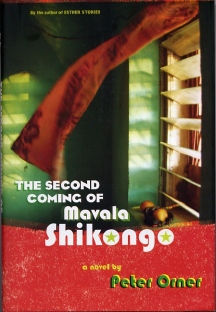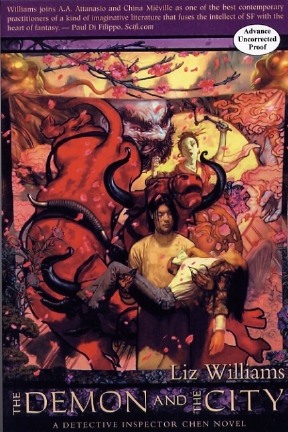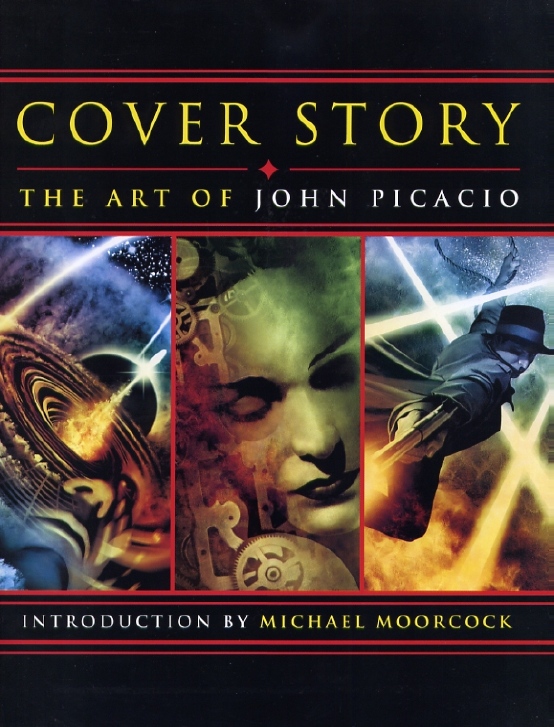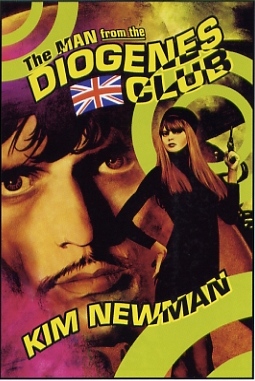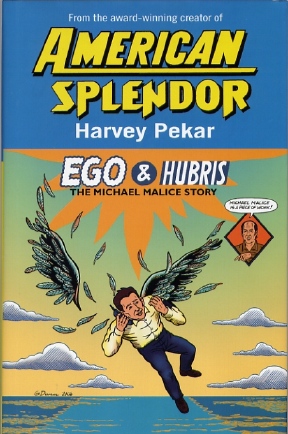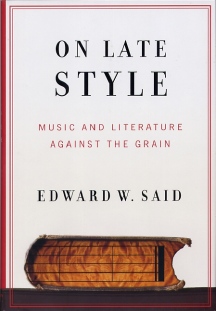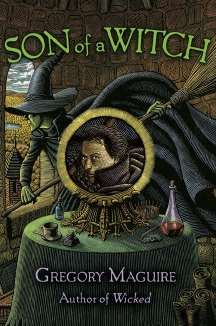|
|
|
This Just In...News from the Agony Column
|
04-14-06: Peter Orner Arrives With 'The Second Coming of Mavala Shikongo' |
|||||||
Grains
of Sand Like Stars
But as in all cases, it's reading the damn book that does the trick. Orner's novel is a cunningly written deadly addiction. Don’t pick up this one unless you're ready to surrender your money. Orner knows how to grab a reader from page one, and he does so in an unconventional manner that defies any expectation that might arise as a result of the definitely eye-catching cover. Orner has one of those crazy-quilt resumes that publishers seem to love when they talk about writers. You know, lawyer, teacher in Namibia, teacher of law, teacher for San Francisco's MFA program; you expect to find caped superhero somewhere in there, but then you remember that caped superheroes tend to work anonymously. Orner's literary resume is equally impressive. McSweeney's, Paris Review, prizes. His previous book was a collection of short stories titled 'Esther Stories'. But don’t let all the high-falutin' put you off your read. Unless, of course, you need that money for groceries or something. Because if you just pick up the book, you'll note that Orner's interest in writing short fiction has served him very, very well. As has that stint teaching in Namibia, and the typically short attention spans of readers standing in bookstores.
The general plot outline for 'The Second Coming of Mavala Shikongo' is not mind-bogglingly complex. Farm Goas is somewhere in Namibia. In the dusty boy's school there, the teachers -- among them, Larry Kaplanski from Chicago -- are not surprised when Mavala Shikongo pops off without a word. She was gorgeous and enigmatic, a combat veteran of Namibia's war for independence. But when she returns with a baby and not a husband -- then they are surprised. But nothing is more surprising than the stories that shuffle together to form this novel, the stories the characters tell one another, the stories they tell themselves in Orner's pitch-perfect poetic prose. Now I know you're thinking precious, but perish the thought. Orner's stories are tough little kernels of survival. Each one will grab you and slowly pull you into the rhythms of life in a desolate town that nonetheless shines with a furious light. This is gripping storytelling, sometime surreal, sometimes tough-as-nails. Each individual vignette slots into place and builds a gorgeous and surprisingly welcoming picture of a world most of us will never inhabit. And for the attention-deprived, this is as easy to read as it gets. We hear a lot about bestsellers and literary works with so-called transparent prose, but Orner's taken this to a different plane. You know the scenes in big-scale cop movies where they shoot out the walls of the house, and the bullet holes let in bars of light that illuminate the dust hanging in the air inside? This is the novel equivalent, and the bullets are the stories that make up the book. By the end of the novel, you're left standing outside in the glorious sun in the glorious world and if every shadow has not been banished, well, they've been lit from within. Of course, part of the appeal of a novel such as this is the fact that Orner has lived the life he's describing. He spent a lot of time in Namibia teaching, just as his non-stand-in in the novel, Larry Kaplanski does. In an interview accompanying the publicity materials, he says that, "While I identify with Kaplanski (or Kaplansk, as he comes to be called in the novel), I would have to say that the character I feel closest to in the book is Obadiah. He's someone who may be outgoing in public, but broods when he's alone. Obadiah gives voice to the things I might actually think." He goes on to say that, "...the character of Mavala is roughly based on two women teachers I knew, both of whom were veterans of the war against South Africa. Both were reluctant to talk about it, unlike the men I knew, who always wanted to talk about it." Well, count me as not surprised that the women didn't want to talk about the war but the men did. Still, one of the fascinating parts of this book is the historical backdrop and the unusual setting. The war between South Africa and Namibia was one of cat's paws for the players in the Cold War; the US, the Soviet Union, Cuba and China all had hands everywhere. What makes 'The Second Coming of Mavala Skikongo' so effective is the way in which the larger conflicts are seen, not in close-up, or as historical events, but rather parts of the characters' pasts. As the story unfolds, we know the big events through the small talk.
Orner's been on the ground here, and that's why he's so able to convey the minutia of those events. What’s more, you can see here the evidence. In a sign that color printing is getting more and more cost-effective, shall we say, with the publicity materials we even get a couple of color prints of photos that Orner took while he was teaching in Namibia. What I found striking was that the colors we see in his home photos are those reproduced on the cover of the novel, the washed out green and faded orange. There's something very evocative in those colors, something that is carried over from the prose itself. Orner's writing lives in those washed out spaces, in those windblown places. |
|
04-13-06: Terror! Shock! Horror! Stocks!; Liz Williams' 'The Demon and the City' |
|||||||
American
Investor's Genre Fiction Debut
But say what you like, at least most of the stuff associated with genre fiction is competently designed. The GIANT CHICKEN on the cover of this little magazinelet, looming over the huddled masses, was mind-bendingly ugly. This isn't genre fiction, I thought walking back into the house. Is it satire? No, alas, this is not satire. This is the reality we live in today, and, as Kim Stanley Robinson so astutely pointed out in my last interview with him, "We live in a bad science fiction novel." What’s interesting here is that Smart-Tek, via this supposed-article/actual advert, is using both science fiction and horror tropes to drive sales. Sorry folks, but you can't announce that your investors can "TURN FEAR INTO PROFIT" without making us think of all the disease-horror movies and novels that have come down through the ages. Announcing "'Fresh attacks on American soil soon!'" conjures up dystopian images of a post-Apocalyptic nation. Add to this the fact that the company being mooted about here, Smart-Tek, sells RFID technology. These tiny implants allow you to track just about anything or anyone anywhere. Forget the UPC code, RFID is the new Mark of the Beast. It's a fantastic, in-your-face contradiction. What's being sold as a preventive measure against the Apocalypse is something that is seen by many as a Harbinger of the Apocalypse. Take this poison now to prevent death next week. (You'll die in a couple of hours, of course, but nosiree, not next week!) What this proves to be is a sort of pre-post Apocalyptic Sales technique. Call it the PPAST, even as it points to the future. Not the future of the world, or our nation, necessarily, but the future of sales techniques. And here’s where genre fiction will once again come to save us. It doesn't take much of a stretch of the imagination to foresee a return to the "space age" days of advertising, driven by the New Space Opera. And what will pre-post Singularity sales techniques be? I can't wait to see what happens when the shredded remains of Madison Avenue are forced to confront that which is by definition unimaginable. "YOUR PROFITS WILL BE BEYOND COMPREHENSION!" Damn, it's just too easy, isn’t it?
One thing is certain. America will ever be the lead in advertising technology. Look for the new crop of cutting-edge science fiction to surf the Advertech waves. It won’t be hard for us to conjure up the amnesia required to forget that Frederick Pohl and C. M. Kornbluth combined New Space Opera and Advertech over fifty years ago in 'The Space Merchants'. Oh the joys of mindwipe! Wait, is that science or science fiction? I forgot! |
|||||||
Heavenly
Hell
'The Demon and the City' offers readers an entertaining adventure steeped, not tinged, with the supernatural, played out against a labyrinthine industrial murder mystery. You'll get your pulse-pounding pages turned, but you'll also find yourself immersed in Williams' complex cosmology. The plot takes off when Inspector Chen attempts a holiday. Zhu Irzh, his demonic partner, finds a fascinating little murder to poke about, one with suggestions of the supernatural. But nothing is ever simple, is it? The city-state finds itself poised between an alliance of forces both angelic and demonic. Bad Things Happen. Chen and Irzh are not surprisingly the best set to unravel the mystery and keep either Heaven or Hell from breaking out on earth. And one who thinks that Heaven on Earth is a good thing has not glimpsed the sublime hereafter through Williams' eyes. There's a lot to like in Night Shade Books' latest experiment. Here we have a great author offering an inventive series that might appeal to a wide swath of readers. Hardboiled mystery fans who enjoy a soupcon of the supernatural in their fiction might have to adjust their perception of just how much uncanny goes into that soupcon, but Williams' tight plotting never gets bogged down in fantasy clichés. Instead, the fantasy elements add tension and a welcome bit of uncertainty to the mystery. But there's no doubt this will end up shelved with the science fiction, and in that regard, it will draw a lot of readers. In shelves stuffed with Buffy the Vampire Slayer novels and stacked with fat fantasies, Williams' work offers a totally original vision. What she does is to turn the mythology itself into an aspect of the mystery, so that as we solve the crime and pursue the criminals, we learn more and more about her take on the afterlife, the after-death, and the beings that make it all so complicated for a simple demon to just get along. Is it so much to ask? The demons I've consulted tell me its not, but I've learned to distrust their judgment. As for Night Shade Books, this series furthers the blur between the big press and the small press. For decades, the big publishers were run more by writers and editors than businessmen and accountants. These people invented what was once called "the midlist", those writers who sold well but didn't consistently end up on the bestseller lists. But recently, the publishing world seems to have been subsumed by the blockbuster mentality, and the midlist has become increasingly thin. If you’re not an overnight success, you'd better have a fallback plan. So the will to publish writers like Williams in hardcover just doesn't exist for these players. And if you deal in the quantities associated with blockbusters, I suppose that makes sense -- business sense, though, and not artistic, reader-oriented sense. But Night Shade, with a price point of $24.95 for a work of original, hardcover fiction, has figured out a way to scale itself up from the boutique world into the midlist world and earn a profit in the process. Night Shade Books has brought itself to compete with the likes of Del Rey, Ace and Tor, and damn if this offering doesn't meet or exceed anything we’ve seen from these publishers. Great cover art supports great writing in a sturdy series by a veteran author. Oh sure, some five years down the line, someone somewhere will twig to the fact that Williams is a great writer. The mass-market paperbacks will come out, and eventually she may end up on the national bestseller list. One-time mid-list man Christopher Moore just hit the national bestseller lists with 'A Dirty Job', and one hopes that publishers will pay attention. Persistence pays off, even if the writer is not working on a series. Ask most people who are feted as overnight successes and they'll tell you that overnight lasts about twenty-some years. The difference between publishing Heaven and Hell is no more supernatural than simple persistence, something that Night Shade and Williams both clearly comprehend. |
|
04-12-06: John Picacio Tells His 'Cover Story' |
|||||
x * 1,000
Warning: This book is a gateway drug. Buying this book will lead to the purchase of other, harder books. In case you've just joined our podcast, John Picacio rules, and while he rules in the foreground he usually remains sort of in the background. Perhaps I should explain. I'm a shallow person. I'd be tempted to say that I don’t judge a book by its cover, but the fact of the matter is that I often make a snap judgment based on a book cover. I suppose that's not uncommon. Of course, this depends on how you shop. I spend a fair amount of time mi-am-binging at the local bookstores. I always find it instructive to see what titles are displayed where. When you're drifting past stacks of books, you can't (yet) telepathically read the opening pages, or random passages from the middle of the book. All you see are the book covers. Like it or not, the cover of a book has a lot to do with how well it sells and who it sells to. Even if you know the author, the cover of a book is the hook that gets it from the stacks and into your hands. Once you've got a book in your hands, only then will you open it up and start reading. At that point, the cover fades from the foreground to the background. It colors your entire impression of what you read, whether you like it or not, but once the words start flowing into your brain in that peculiar process known as reading, the cover is strictly a backdrop. John Picacio brings that backdrop into the foreground in 'Cover Story' (Monkeybrain Books ; May 2006 ; $39.95). Picacio is the big brain behind many of the covers for the Pyr imprint, as well as -- not surprisingly -- Monkeybrain. 'Cover Story' collects his paintings for a number of great books that we've covered in this column. But more interestingly, in it, Picacio tells the story behind the covers and thus the title, 'Cover Story'. Now I'm not alone in liking SFnal art. It’s always been a key part of the genre, and the relationship between cover artists and writers is a lot closer in the genre than it is elsewhere. Picacio is mining a classic vein of art book, and he's done an impressive job at putting together a package that is both (an) attractive (nuisance) and packed with information about how SF art is executed by one who clearly understands all the nuances of design, art and genre. The setup here is pretty simple, and it lends itself to the sort of spotty reading that art books actually get. You know; pick it up, find either a painting or the cover of a book by an author you already like and read about that cover only. But first there's the introduction by Michael Moorcock, and this leads me to comment on the selection of authors that Picacio has illustrated. They are all, to a one, authors I've read and enjoyed, and readers of this column will find lots of familiar titles and covers here. There's more than a bit of simpatico between the style of fiction that Picacio finds himself attached to and the style of fiction I personally enjoy reading. This means I tend to like the art and enjoy this book that much more.
There is, alas, one problem with this book, and that's the gateway drug effect. That problem, simply stated, is that readers who pick up this book are bound to find titles that they must have but don’t have. For me, for example, it's Kim Newman's 'The Man from the Diogenes Club', for which Picacio did not only the illustration but the design. I swear that the fact that Picacio relates how he watched the Monterey Jazz Festival film that features Jimi Hendrix has nothing to do with this, even though Monterey is but a short drive from chez Kleffel. Nope, it's the combination of to-die-for graphics, a great idea and -- Kim Newman. Had I seen that sucker in the store, no matter whose name was on the cover, I'd be tempted. Even were they to have been Names I Dare Not Write Here. 'Cover Story' concludes with an extensive interview conducted by Joseph McCabe. He's ultra-qualified for this gig, having written a Stoker-nominated book of interviews with Neil Gaiman and his collaborators, 'Hanging Our With the Dream King'. Some guys have all the luck. At least I get the books! Finally, one must needs, or needs must mention that Monkeybrain have done an outstanding job of putting this book together. Super heavy-duty thick pages, outstanding color processing and a format that is large but not too large. It should go directly into your Demco/Brodart cover. (If my scan looks a tad funny, then it’s because the book is just a bit too large for my scanner. ) Try not to get even a single fingerprint on it. It's probably white-glove reading. I'll admit it. I love a chance to put on the white gloves to read. So what more can you ask? White gloves, gateway drug. Buy at your own peril. Warning! Book danger! |
|
04-11-06: Harvey Pekar Experiences 'Ego & Hubris' |
|||
The
Michael Malice Story
'AMERICAN SPLENDOR'. I had to put that title real big, so, in case you missed the whole HOLLYWOOD MOVIE Aspect, it was just a little clearer. So was it the publisher or the author who had their work adapted? One might suspect the latter. They're certainly not leaving it to chance that you find out that HARVEY PEKAR, award-winning creator of AMERICAN SPLENDOR Has written a new novel/graphic novel/whatever(!), titled 'EGO & HUBRIS: The Michael Malice Story' (Ballantine Books ; April 11, 2006 ; $19.95). Just to be clear here, this new book by the author of AMERICAN SPLENDOR Is not in fact part of that series, part of those books, nor is it a book upon which the movie was based nor is it a book based on the movie. The only thing it has to do with the HOLLYWOOD MOVIE Is that it's written by Harvey Pekar. Damn, writing? What's that? Who cares about the writers! Is ACADEMY AWARD Winning (I think; I don't exactly keep track of these things) Paul Giamatti playing Harvey Pekar again? No, no, no, no! Well, maybe, sometime in the future, but this being a website dedicated to books and writing (those funny marks in books between the pictures), this here article is about Pekar's latest book, which is something of a departure for he and his artist, Gary Dumm, being that it's not exactly about Pekar or his oh-so-quotidian adventures, but rather, about the fairly annoying Michael Malice. And who better to bring us the annoying Malice than Pekar, who managed to transform some 37 years of work as a file clerk into AWARD-WINNING adventures? Nobody, trust me on this. So, now that you're aware of all the movie-hype they've inflated this book with, let's get to the meat of the matter, Pekar's latest. Random House has given Pekar a very nicely printed, tight and tidy hardcover format for his latest work. It's beautifully laid out, easy-to-read and feels right. If you're a book freak, well, these things matter, I'm a book freak, and well, these things matter. I think this is a quantum leap in terms of format over 'American Splendor: Our Movie Year', a book I loved enough to review twice for this column, once in prose format and once, (oh the shame!) Harvey Pekar-style in graphic format. The title gives readers ample clues as to what to expect here, but I'm going to fill that out a bit. If you recall 'Fish Story' from 'Our Movie Year', you've already met Michael Malice. Apparently, it got enough word-of-mouth (as opposed, one must guess, to word-of-print) to give Pekar the wedge he needed over at Random House to write an entire book telling the story of the author of that story, Michael Malice. And that story is the story told in this book, which is actually written by Harvey Pekar. Got it? Again, let's explore exactly what this book is. So, Harvey Pekar hits the big, big time. Movie stars. Swimming pools. Y'all come back, now, y'hear? Somewhere either before or after that, Michael Malice meets Pekar and throws a line at Pekar. Many lines, and Pekar's interest is piqued. He adapts "Fish Story". In the process, he finds himself fascinated with Malice. Well, interested at least. And if Pekar is interested in a person as a character enough to write about him, said character is interesting enough to read about. Malice is not what you’d expect him to be, and what he proves to be is worth reading about in Pekar's book as opposed to my article. I'll refer you there for any more info about Malice. Well, I suppose you can go to Malice's remarkably successful websites, overheardintheoffice.com and overheardinnewyork.com. Assuming you want to leave this makes-not-a-red-cent website behind. To me, the interesting thing about Pekar's latest is the writing process. Malice tells his story to Pekar, who writes up the comic with the panels, word balloons and whatnot. Pekar assures us that it's Malice's words we're reading. But Pekar has edited Malice into a very complicated character, or rather, let his editing reveal Malice to be the person Pekar perceives Malice to be. It's certainly germane to remember that Pekar himself is something of a character. He's a filter, but most assuredly NOT of the Vaseline-smeared soft focus variety. Pekar gets to the stuff I find very interesting, the sort of everyday-life matters that color the lives of those of us NOT in a HOLLYWOOD MOVIE. If you're in NEW YORK, today, you can see Pekar at a big ol' chain bookstore. On Monday, April 17, he's appearing in San Francisco as a part of NPR's very interesting City Arts & Lectures. There's a story in that show as well -- not one I have the time to relate at the moment. Most importantly for ME, he's going to be at Bookshop Santa Cruz, exactly one week from the day you're most likely to be reading this article. That means I've got exactly a week to find the comics my brother-in-law loaned me so that I can get them signed for him. They were in the green thing I use to haul books around when I go on vacation, taking about 15 books when I'll only read say, two. Wish me luck. Wish Harvey luck. Malice, well, he appears to have received all the luck he could have wished for. He's starring in the latest Harvey Pekar book. What more could you ask for from life? Oh, that's right. Who's going to play Malice in the HOLLYWOOD MOVIE Based on this book? And you know, that movie will probably have AMERICAN SPLENDOR Looming larger than the title EGO & HUBRIS. An irony that will no doubt be as lost on the producers as it was on the publishers. |
|
04-10-06: Edward Said 'On Late Style' ; A 2003 Conversation With Gregory Maguire |
|||
Better
Late Than Ever
Start from there, work backwards. It isn’t easy to talk about, this dying, this end. But there it is. The heart stops beating, the hand stops writing, composing, painting; stops. It doesn't take prescience to foresee your own death, to look at the end as it approaches, to understand and confront that fact. It does, however, take courage. Artists are particularly prickly as they approach their own ends. The most accomplished, those who have evidence during their lives that their art will survive them, find themselves facing a museum of their own making. Mortality and immortality clash. Here and not-here meet in those final years, months, days, hours, minutes, seconds. Forced by the same intellect that created for some portion of life to examine their own death, writers, composers, and painters evince Late Style. They change, or not. Cultural critic Edward Said taught a graduate seminar at Columbia University in the fall of 1995. A world away, it seems now. The subject of that seminar was what he called late style, and 'On Late Style: Music and Literature Against the Grain' (Pantheon Books / Random House ; April 11, 2006 ; $25) captures that one-time event. Written as Said battled leukemia in the final years of his life, it's a mirror held up to mirrors. Said, the author of such works as 'Culture and Imperialism', is a sharp-eyed observer. Starting with Beethoven and Schoenberg, moving on to Mozart, Richard Strauss and Jean Genet, Said carefully and compellingly examines what happens to the art and the artist as the end draws near. There's no single answer here, no simple theory or pat conceptualization. What happens as death approaches is no less complicated than what happens as life unfolds. It is, however, different, and 'On Late Style' lets the reader explore that territory with a man who knew whereof he spoke. Said is best known for -- for, well, that depends on where you first encountered him. Did you read his work as a music critic for The Nation? Or his seminal examination of 'Culture and Imperialism'? Or did you hear him play piano with Daniel Barenboim or Yo-Yo Ma? He was not a simple man, and this is not a simple book. By the time someone of the stature of Mozart, Beethoven or Said himself knows that they are going to die, by the time the end is in sight, these creators have themselves become complicated almost beyond our imagination. Which is why it's important to have someone as astute with language and as knowledgeable about art in all its forms as Said as your guide to comprehend, to wrap your brain around what’s happening in works like Missa Solemnis by Beethoven or 'Death in Venice' by Thomas Mann. 'On Late Style' is short and compact, but it's complex. Said is very smart, and his narrative unpacks as you read it. He can write a sentence like this: "The body, its health, its care, composition, functioning, and flourishing, its illusions and demise, belong to the order of nature; what we understand of that nature, however, how we see and live it in our consciousness, how we create a sense of our life individually and collectively, subjectively as well as socially, how we divide it into periods, belongs roughly speaking to the order of history that when we reflect on it, we can recall, analyze and mediate on, constantly changing its shape in the process." OK, that's page one. But he can also write a sentence like this: "The first time I saw Jean Genet was in the spring of 1970, a theatrically turbulent and inchoate season when energies and ambitions were released from the social imagination of America into its social body." He's the kind of writer who can thread his way through an intricate bit of musical, literary or critical theory and then mention his own acquaintance with some gigantic legend. Of course, this book on late style is itself an example of late style, and as with much work in this mode...it's unfinished. Said was in the process of writing the book when he passed away in 2003. But much of the material was already there, and to my mind, it's almost appropriate that Said's thoughts about late style themselves become such an exemplar. But how could a work that moves from Mozart to Genet, from Glen Gould to Euripides be seen as unfinished? How could a published book be unfinished? In fact, no writer ever finishes a book. That exercise is left for the reader. |
|||
"There's
Magic Still Afoot"
And thus, I'm really happy to bring readers and listeners this delightful interview with the hilarious Gregory Maguire, author of 'Wicked', 'Mirror Mirror' and his latest novel, a sequel to 'Wicked' titled 'Son of a Witch'. All I can say is, having listened to this interview as I put the podcast together: WHAT WAS I THINKING? Maguire is hilarious, insightful and really an interesting author; a fantasist who hit the big time without going the route of the usual fantasy publications and publishers. My next stop is Bookshop Santa Cruz, where I'll pick up Maguire's latest. Again: what was I thinking? So, back in 2003, the musical version of 'Wicked' was brand-spankin' new and hot off the press. In the interview, Maguire talks about a filmed version of the novel -- not the musical, the novel -- which would have been budgeted at $110 million, but never made it because, as Maguire observes, Hollowood is a man's town. A movie with all female leads and gobs of special effects is just not going to fly. Well, as readers, we'll always have the superior version anyway, consisting solely of Maguire's wonderful words -- which now include the sequel. Be assured that the next time he comes to town, I'll be there and we'll follow up on this conversation. But in the interim, you can enjoy the MP3 or the RealAudio version. As for me, well, I'm sure you've guessed where I'm headed. I'm off to... |
